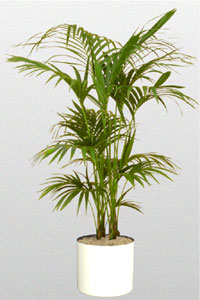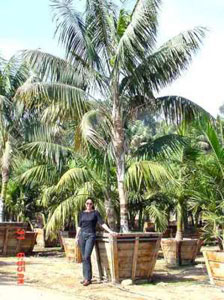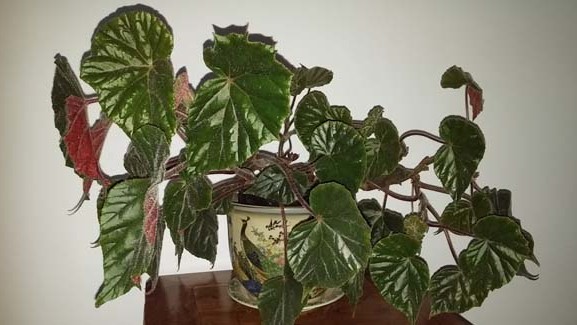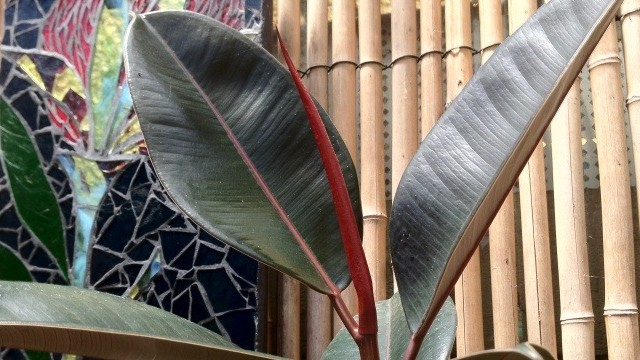
There are only two howeas and they are both native to Lord Howe Island. The Kentia Palm is called Thatch Palm on the island because of its use in this way.
Kentia Palms were the iconic parlour palms of the Victorian era. They are very graceful plants with a single, smooth trunk and feathery fronds on long, smooth stalks. The flowers are small and fleshy and are borne on long arching spikes which grow up under the fronds and mature as small red fruit.
They were named after a father and son, Johann Reinhold Forster and Georg Forster, naturalists who sailed on Cook’s second voyage to the Pacific. The Forsters got the opportunity to sail with Cook after Joseph Banks withdrew from the expedition.
Growing conditions
Kentia palms are long lived plants. They tolerate low light, dry atmosphere and draughts – the perfect indoor plant!
Spraying with warm water may prevent the tips of the leaves from browning. They prefer a stable temperature and a minimum of 10°C. If the light is poor it is best not to have them in too warm an environment.
They should not be in bright sunlight. Kentia palms may be kept in the same pot for years as long as the potting mix contains some humus and is well drained.
Pest and disease problems
They are susceptible to Mealybugs, mites and Scale. Wolverton (see information sources) gives a recipe for a non-toxic spray:
2 teaspoons (10ml) vegetable oil
1/8 teaspoon (0.6ml) washing up liquid
230ml warm tap water
Shake vigorously in a spray bottle and spray the leaves.

Kentia Palm may succumb to Phytophthora in low light and very moist conditions.
Kentia Palm grows into a substantial palm in the right conditions. This image is courtesy of www.justpalmtrees.com, a US company that buys unwanted palms from homeowners (not in Australia!)
Information sources::
500 Popular Indoor Plants for Australian Gardeners, 1999 Random House.
Wolverton, B C, 1996, Eco-friendly House Plants, Orion Publishing.
Related Articles:
The Benefits of Indoor Plants
On average, every Australian spends around 90% of their time indoors, be it at work, at home, at the shops or the local pub - a figure that is quite…
Ficus elastica (Rubber Plant)
Ficus elastica Just what makes that little old ant, Think he’ll move that rubber tree plant Anyone knows an ant, can’t - Move a rubber tree plant But…




